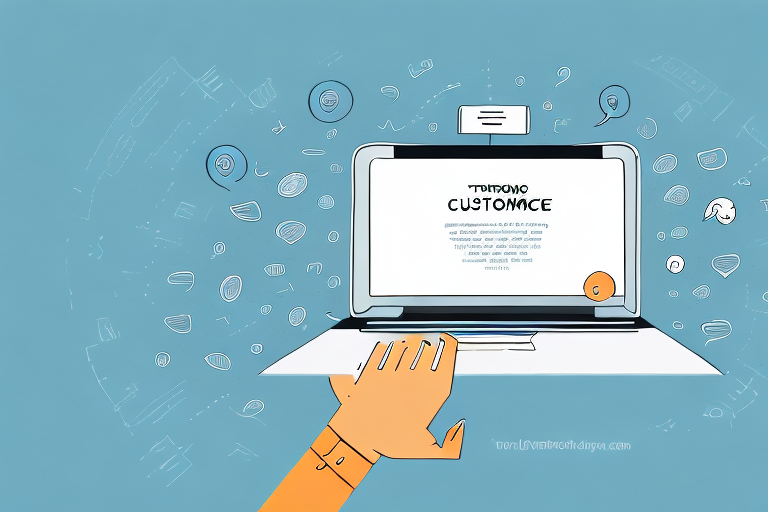How Live Chat Can Help Boost Your Ecommerce Business
As an ecommerce business owner, you are always seeking ways to improve customer satisfaction, increase sales, and reduce costs. One solution that can help achieve all these goals is implementing a live chat system on your ecommerce site. In this article, we explore the benefits of live chat for ecommerce businesses, how it improves customer experience and satisfaction, its role in increasing sales and conversions, and more. We also provide you with best practices and tips for choosing and implementing a live chat system, as well as overcoming common challenges and mistakes.
The Benefits of Live Chat for Your Ecommerce Business
Live chat is a communication channel that allows your customers to get in touch with your business in real-time. It enables them to ask questions, get information, and receive support from your customer service team without leaving your website. Here are some of the benefits of having a live chat system:
- Increased customer satisfaction: Customers appreciate instant assistance and timely responses to their inquiries. Live chat minimizes wait times and improves overall customer satisfaction.
- Higher sales conversion rates: When customers have their questions answered quickly and efficiently, they are more likely to make a purchase. According to a Forbes report, businesses using live chat see a conversion rate increase of up to 20%.
- Reduced costs: Live chat can be more cost-effective than other support channels like phone or email. It allows your support team to handle multiple chats simultaneously, reducing wait times and increasing productivity.
Another benefit of live chat is that it allows you to gather valuable customer data. By analyzing chat transcripts, you can identify common customer concerns and pain points. This information can help you improve your products or services and enhance the overall customer experience.
Live chat also provides an opportunity for your business to showcase its personality and brand voice. By engaging with customers in a friendly and helpful manner, you can build stronger relationships and increase brand loyalty. Additionally, you can use chatbots to provide 24/7 support and automate simple tasks, freeing up your support team to focus on more complex issues.
How Live Chat Improves Customer Experience and Satisfaction
Implementing a live chat system on your ecommerce site can improve customer experience and satisfaction in several ways. Here are some key benefits:
- Instant support: Customers do not have to wait for prolonged periods to get assistance. They can quickly get answers to their questions and resolve any issues they face in real-time.
- Personalized interactions: Live chat enables you to offer a more personalized experience to your customers. You can greet them by name, offer tailored recommendations, and even provide customized solutions to their queries.
- Multi-tasking: Live chat allows customers to continue browsing your website while they are receiving support, improving their overall experience.
Moreover, live chat helps in reducing customer frustration and increasing their loyalty towards your brand. By providing quick and efficient support, you can prevent customers from abandoning their carts or leaving your website altogether. This can lead to increased sales and revenue for your business. Additionally, live chat enables you to gather valuable feedback from your customers, which can help you improve your products and services based on their needs and preferences.
The Role of Live Chat in Increasing Sales and Conversions
Live chat plays a crucial role in increasing your ecommerce sales and conversions. Here are some ways it accomplishes this:
- Real-time support: Live chat enables customers to receive instant support and resolve any issues they face, which improves the chances of a successful sale.
- Reduced cart abandonment: Many customers abandon their carts due to a lack of information or confusion. Live chat helps address their concerns and provides the information they need, thus reducing cart abandonment.
- Proactive product recommendations: Your support team can offer personalized recommendations to customers, which can lead to increased sales and larger orders.
Apart from the benefits mentioned above, live chat also helps in building customer trust and loyalty. By providing real-time support and personalized recommendations, customers feel valued and taken care of, which can lead to repeat purchases and positive reviews.
Moreover, live chat can provide valuable insights into customer behavior and preferences. By analyzing chat transcripts and customer feedback, you can identify common pain points and areas for improvement in your ecommerce store, which can help you optimize your sales and marketing strategies.
Using Live Chat to Build Trust and Credibility with Customers
Building trust and credibility with customers is critical to the success of any ecommerce business. Live chat can help you achieve this in several ways:
- Improved communication: Live chat allows for prompt and clear communication with your customers, which can help to build trust.
- Quick conflict resolution: Live chat helps in resolving customer conflicts and concerns, which can help to build credibility.
- Positive customer interactions: Live chat enables you to provide personalized and responsive customer support, leading to more positive interactions and better business relationships.
The Cost-Effective Solution: How Live Chat Saves You Money
Live chat is also a cost-effective solution for your business. Here are some ways live chat can help save you money:
- Reduced support team costs: Live chat enables your support team to handle multiple customers simultaneously, reducing your need for additional staff or overtime costs.
- Lower phone and email support costs: Live chat is often a more efficient support channel than phone or email support, meaning less time and resources expended on those channels.
Best Practices for Implementing Live Chat on Your Ecommerce Site
Implementing a live chat system on your ecommerce site requires careful consideration and planning. Here are some best practices to follow:
- Train your support team: Ensure that your support team members are trained on how to use live chat effectively.
- Choose the right software: Select a live chat software that suits your business needs and budget.
- Integrate with other support channels: Integrate live chat with other support channels to provide a seamless customer experience.
- Measure success: Track your live chat metrics and use them to constantly improve your performance.
Integrating Live Chat with Other Customer Support Channels
Integrating live chat with other customer support channels is essential for a seamless customer experience. Here are some benefits of integration:
- Omnichannel support: Customers can choose their preferred support channels without any disruptions in service.
- Improved collaboration: Your support team can coordinate and collaborate across channels, improving their productivity and efficiency.
Measuring the Success of Your Live Chat Strategy: Metrics to Track
To determine the success of your live chat strategy, you need to track the right metrics. Here are some essential metrics to track:
- Customer satisfaction: Use surveys or feedback to measure customer satisfaction levels.
- Chat duration: Track the duration of the customer’s live chat session to evaluate your team’s productivity and efficiency.
- Response time: Track the time it takes for your team to respond to inquiries. Faster response times can lead to higher customer satisfaction levels.
Overcoming Common Challenges in Implementing a Live Chat System
Implementing a live chat system is not without its challenges. Here are some common challenges you may face and how to overcome them:
- Technical issues: Ensure that you have adequate technical support to address any issues that may arise.
- Staff training: Train your support team adequately to handle customer inquiries promptly and professionally.
- Integration difficulties: Ensure that your live chat software can be easily integrated with your ecommerce platform and other customer support channels.
Maximizing the Potential of Automated Responses in Your Live Chat System
Automated responses allow you to provide fast and consistent answers to frequently asked questions. Here are some ways to maximize the potential of automated responses:
- Create a knowledge base: Develop a comprehensive knowledge base of common issues and solutions.
- Use chatbots: Utilize chatbots to handle routine inquiries and free up your support team to focus on more complex issues.
Personalizing Your Customer Interactions with Live Chat
Personalizing customer interactions is crucial for building strong and lasting relationships. Here are some ways to personalize your customer interactions with live chat:
- Use customer profiles: Access customer profiles to see their order history and past interactions with your business. This allows you to personalize your support and offer tailored product advice.
- Address customers by name: Greet customers by name to make them feel valued.
- Offer customized solutions: Use the data available to you to offer customized solutions to customers based on their needs.
Choosing the Right Live Chat Software for Your Ecommerce Business
Choosing the right live chat software is crucial for the success of your ecommerce business. Here are some factors to consider when choosing a live chat software:
- Features: Look for features such as chatbots, canned responses, and customer profiles.
- Scalability: Ensure that the software can accommodate your business growth.
- Integrations: Ensure that the software integrates with your ecommerce platform and other customer support channels effectively.
- Price: Look for software that offers transparent pricing that suits your budget and business needs.
Tips for Training Your Staff to Use Live Chat Effectively
Training your staff to use live chat effectively is essential for ensuring the success of your live chat system. Here are some tips:
- Train consistently: Consistently train your support team on how to use live chat properly and effectively.
- Provide scripts and templates: Provide scripts and templates for common inquiries to speed up response times and improve consistency.
- Encourage good etiquette: Encourage your support team to remain professional and courteous in their interactions with customers.
Common Mistakes to Avoid When Using Live Chat for Ecommerce
Here are some common mistakes to watch out for when using live chat:
- Ignoring automated responses: Ensure that automated responses are customizable and tailored to your business.
- Not tracking metrics: Track live chat metrics to determine what’s working and what’s not.
- Misunderstanding customer inquiries: Ensure that your support team has a thorough understanding of customer inquiries before responding.
Implementing a live chat system on your ecommerce site can offer many benefits, including higher customer satisfaction, reduced costs, and increased sales conversions. However, careful planning, training, and tracking are necessary to ensure the success of your live chat system. Follow the best practices and tips provided in this article to choose, implement, and maximize the potential of your live chat system for your business.






















